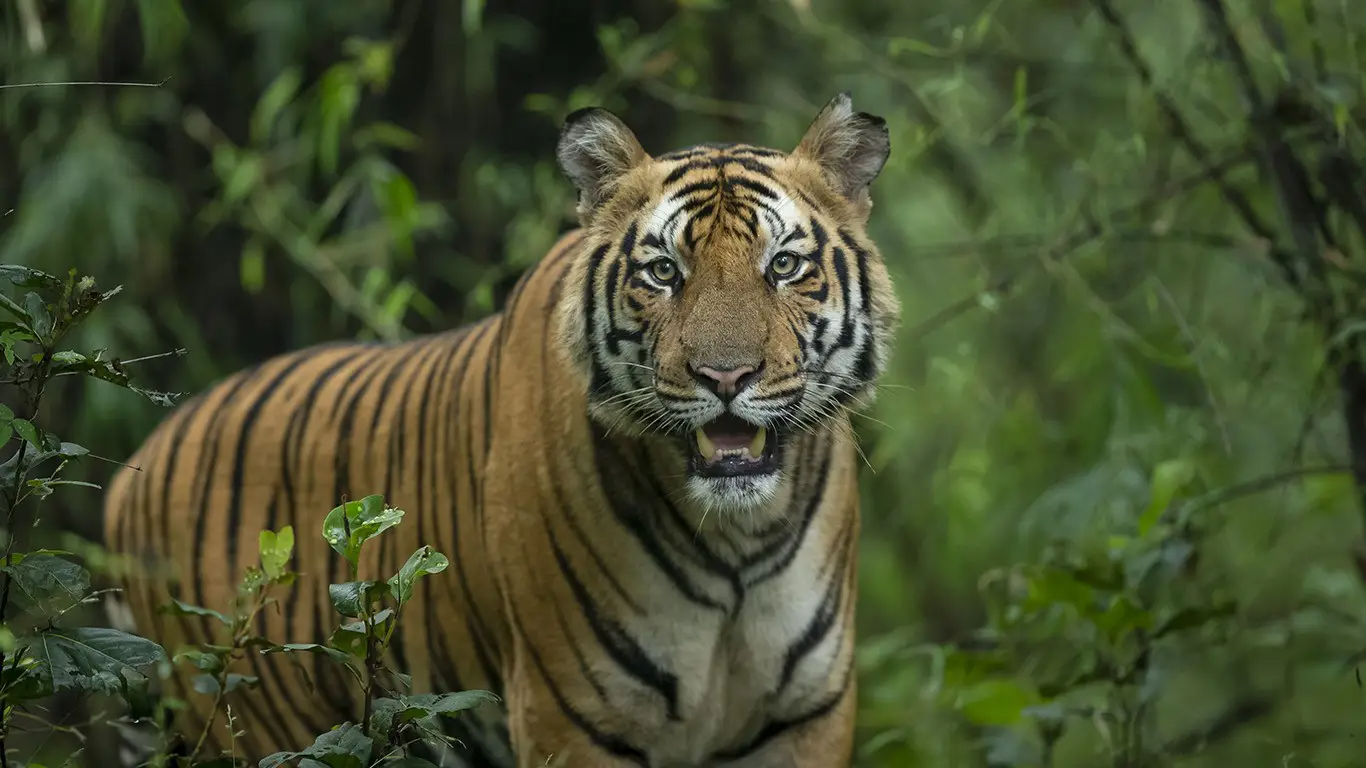India is home to nearly 70% of the world’s wild Bengal tigers, making it the ultimate destination for wildlife enthusiasts. From the dense forests of Central India to the floodplains of Assam, each reserve offers a unique experience. If you are planning an India safari tour or want to experience a jungle safari India, choosing the right reserve is crucial for a memorable trip.
This guide explores India’s leading tiger reserves, practical travel tips, and conservation insights to help you plan an unforgettable adventure.
India’s Tiger Conservation Success
India’s tiger conservation journey began with Project Tiger in 1973, aimed at reversing the decline in tiger populations due to poaching and habitat loss. Since then, the tiger population has grown from around 1,400 in 2006 to over 3,100 in 2022. With more than 55 tiger reserves covering nearly 80,000 square kilometers, India offers some of the most organized and rewarding jungle safari India experiences in the world.
A great India safari tour should combine opportunities to see tigers with ethical wildlife practices, knowledgeable guides, and well-managed habitats.
Top Tiger Reserves for an India Safari Tour
Jim Corbett Tiger Reserve, Uttarakhand
Corbett is India’s oldest national park and the first tiger reserve under Project Tiger. Spanning over 1,300 square kilometers, it offers riverine belts, grasslands, and sal forests. The Dhikala zone is especially famous for tiger sightings and wildlife photography.
Corbett is ideal for first-time visitors or families taking an India safari tour, with comfortable lodges and scenic landscapes. The best time to visit is from November to June.
Bandhavgarh Tiger Reserve, Madhya Pradesh
Known for the highest tiger density in India, Bandhavgarh is a top destination for those seeking guaranteed sightings. Open meadows and core zones like Tala make it ideal for photographers and wildlife enthusiasts.
A jungle safari India in Bandhavgarh is an unforgettable experience, as visitors can see tigers, leopards, sloth bears, and abundant deer species. February to May is the best period to visit.
Kanha Tiger Reserve, Madhya Pradesh
Kanha, covering over 2,000 square kilometers, combines lush forests, vast meadows, and winding rivers. It inspired Rudyard Kipling’s The Jungle Book and is known for its successful reintroduction of barasingha (swamp deer).
A jungle safari India here offers a balanced wildlife experience with excellent chances to spot tigers while exploring well-maintained zones. The ideal visiting period is November to June.
Ranthambore Tiger Reserve, Rajasthan
Ranthambore uniquely blends history and wildlife. Tigers roam near ancient ruins and waterholes, making it one of the most photographed parks in India. Its accessibility from Jaipur and Delhi makes it suitable for an India safari tour.
The best months for tiger sightings are March to May, and zones 2, 3, and 4 are most recommended for first-time safari visitors.
Tadoba–Andhari Tiger Reserve, Maharashtra
Tadoba provides a quieter, less crowded experience with high tiger sighting rates. Its teak forests, bamboo groves, and water bodies create an ideal backdrop for wildlife photography.
Travelers seeking a more authentic jungle safari India often prefer Tadoba for its remoteness and well-trained local guides. April and May are the best months to visit.
Kaziranga Tiger Reserve, Assam
Famous for one-horned rhinoceroses, Kaziranga also hosts one of the highest tiger densities in India. Its wetlands, grasslands, and forests support tigers, elephants, buffaloes, and hundreds of bird species.
A jungle safari India here can be done via jeep or elephant rides, offering a unique perspective on India’s floodplain ecosystems. The optimal visiting season is November to April.
Choosing the Right India Safari Tour
Your choice of reserve depends on travel preferences:
- First-time visitors: Ranthambore or Corbett for accessibility and reliable tiger sightings.
- Photographers: Bandhavgarh or Tadoba for frequent sightings and clear visibility.
- Families or nature enthusiasts: Kanha or Kaziranga for balanced biodiversity and immersive experiences.
- Luxury travelers: Kanha or Ranthambore for premium lodges and curated safaris.
- Adventure seekers: Pench or Satpura for walking safaris and less crowded wilderness.
Best Time to Plan a Jungle Safari India
- October to February: Cool weather, lush landscapes, ideal for overall wildlife viewing.
- March to May: Peak tiger-sighting season as animals gather near waterholes.
- June to September: Monsoon season; most reserves close to allow breeding and prevent flooding.
Final Thoughts
Choosing the best tiger reserve in India is about more than sightings. A quality India safari tour or jungle safari India balances wildlife encounters, responsible tourism, and conservation awareness. Bandhavgarh excels in density, Kanha in ecosystem management, and Corbett in heritage and accessibility.
A tiger safari is more than a tourist activity; it is an opportunity to support conservation and witness the majestic Bengal tiger in its natural habitat. Responsible travel ensures future generations can continue to hear the roar of the tiger in India’s forests.
